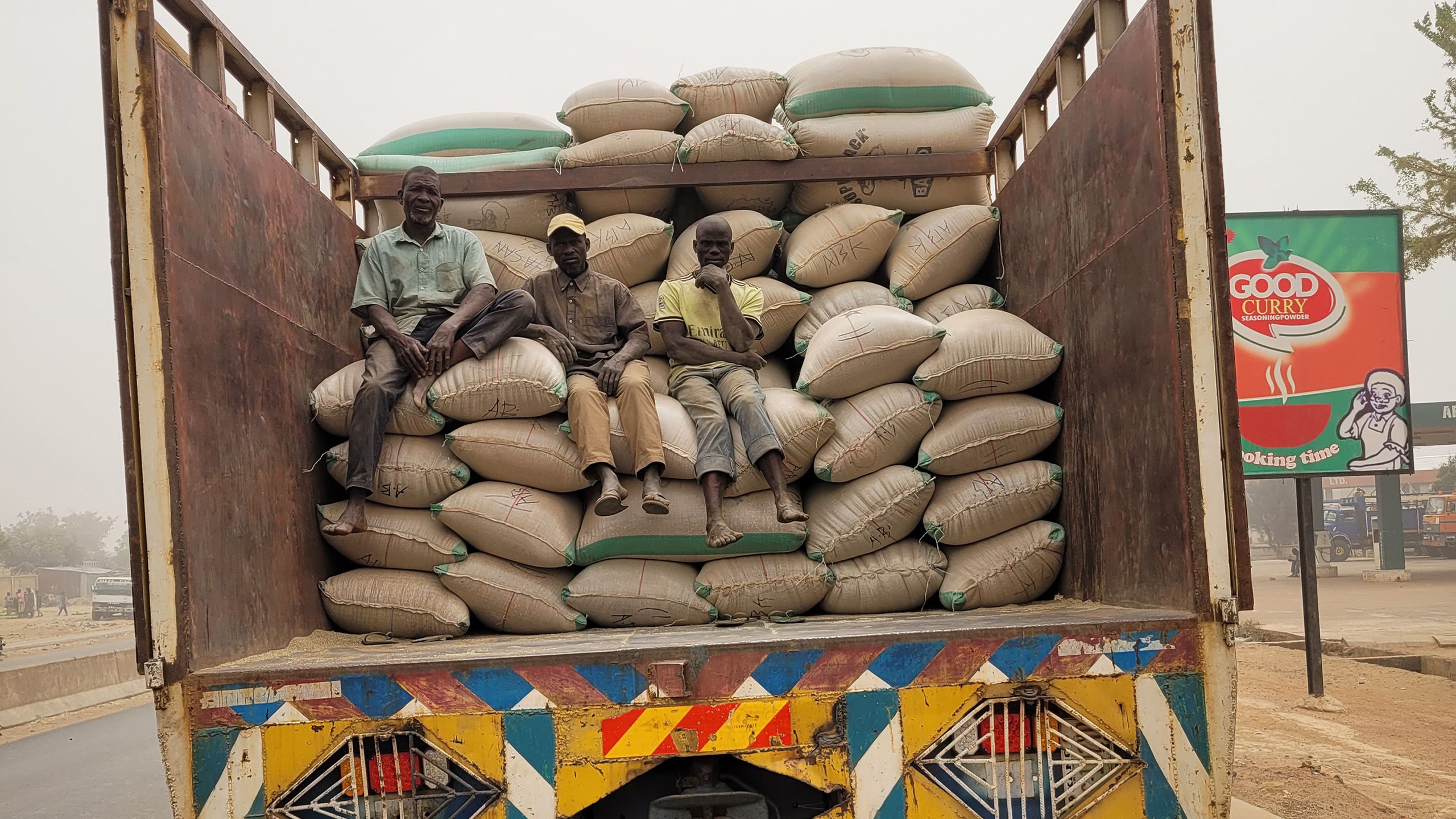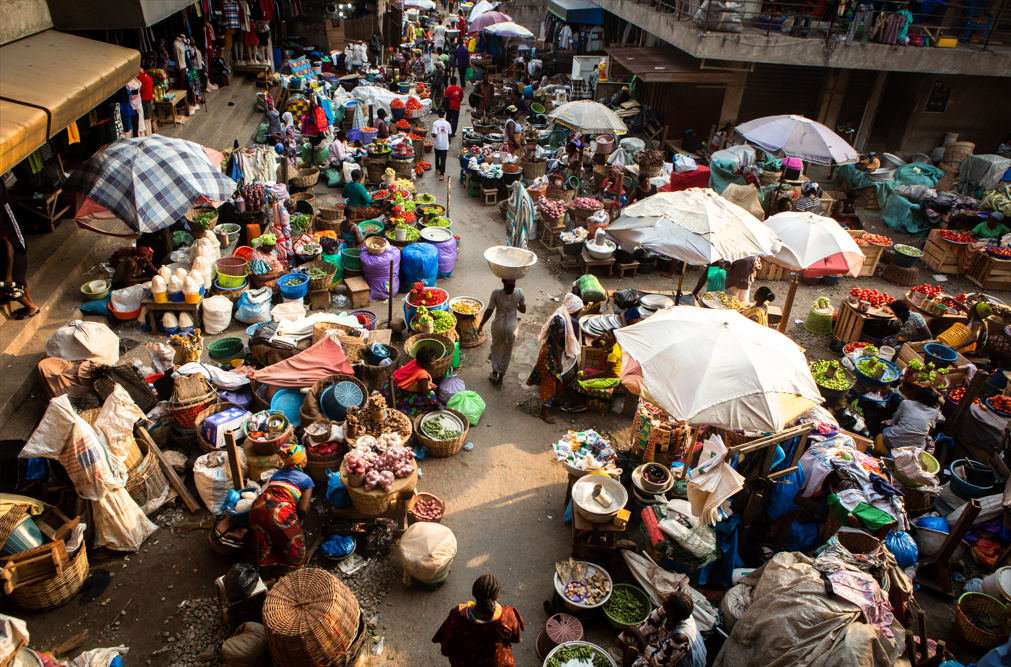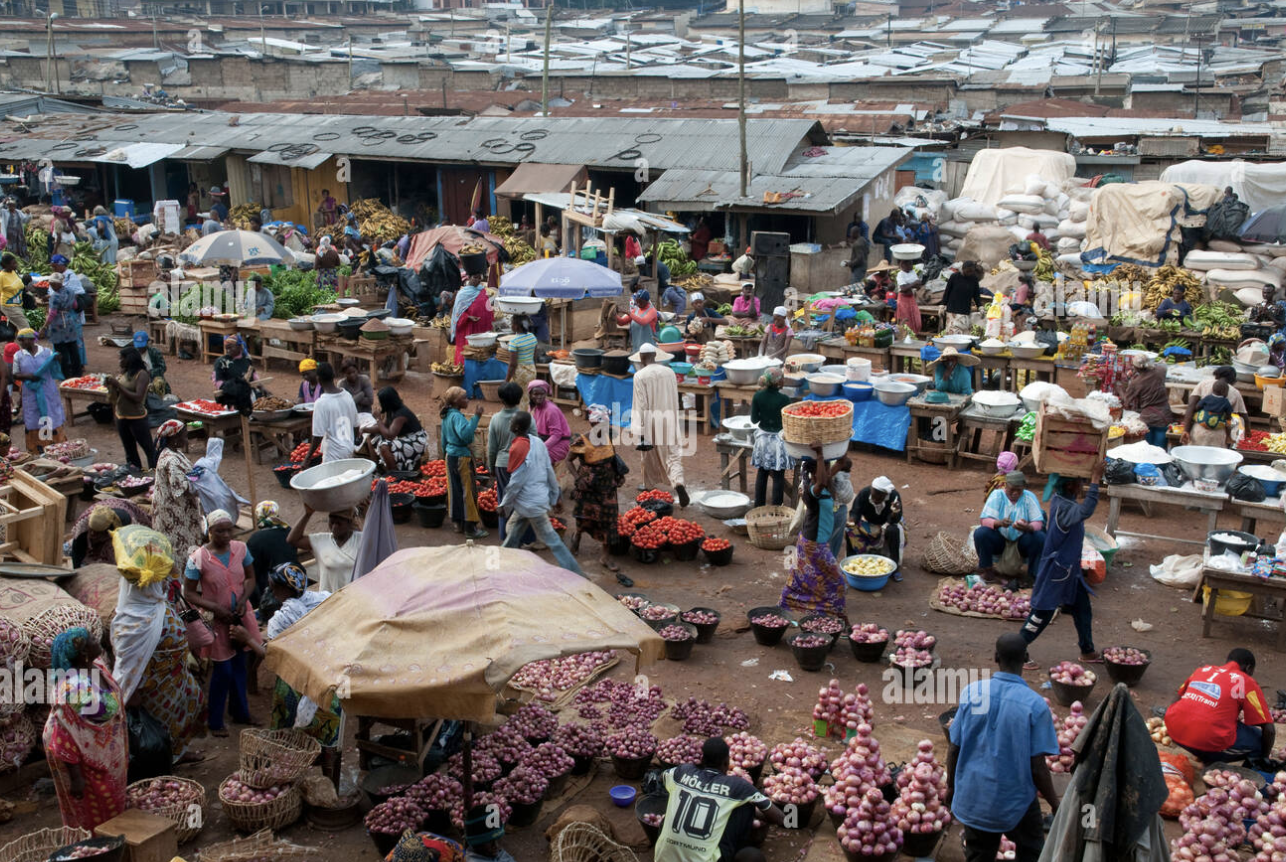
Unseen but essential
Revealing the true scale and impact of West Africa’s regional food trade
In West Africa, intra-regional food trade is often portrayed as small-scale, low-value, and limited to short distances. This perception stems largely from a persistent data gap. Official statistics consistently fail to capture the true scale and significance of regional food trade, reinforcing the myth that it merely supports subsistence. While researchers have long raised concerns about this disconnect, no comprehensive estimate had quantified the full extent of underreporting.
A new OECD/SWAC report sheds light on the true nature of intra-regional food trade in West Africa. Drawing on innovative data sources and rigorous research, the findings reveal a vibrant, multi-billion-dollar trade system that drives the agrifood economy and bolsters food and nutrition security across the region.
The findings are striking:
Up to 85% of intra-regional food trade goes unrecorded in official statistics.
Regional food trade is estimated to be worth USD 10 billion annually—about six times higher than what official figures suggest.
Up to 68 trillion kilocalories are traded regionally each year— enough to feed nearly one-quarter of the region’s population.
A USD 10 billion food trade network, mostly unseen

The OECD/SWAC estimates place the true value of intra-regional food trade in West Africa at around USD 10 billion per year—six times higher than the officially reported figure of USD 1.7 billion.
This puts it on par with the region’s total imports of rice, wheat, and palm oil from outside West Africa. It is also six times greater than the total official development assistance directed to food and agriculture in the region.
Intra-regional food trade in West Africa, 2014-22
This hidden trade is central to regional food and nutrition security. In calorie terms, this translates to 68 trillion kilocalories traded each year—enough to feed 80 million people, or nearly one-quarter of the region’s population.
Regional flows of kilocalories, 2014-22 average
A richer and more diverse trade than statistics suggest

Official data primarily reflects a narrow set of commodities—mainly processed foods and oils and fats. In doing so, it fails to reflect the true diversity and nutritional value of the foods being traded. Beyond the often-cited exchanges of livestock and cereals between Sahelian and coastal countries, a much wider range of essential, nutrient-rich foods moves across borders every day.
Insights from unrecorded food trade in Benin and Nigeria
Detailed national surveys on unrecorded food trade in Benin and Nigeria offer a more accurate picture. Benin recorded imports of 115 different food products and Nigeria 99, many of which are missing from official statistics.
These include a wide range of nutritious foods: cereals (such as maize, rice); vegetables (cabbage, onions, tomatoes); fruits (mangoes, oranges, bananas); animal proteins (poultry, eggs, smoked fish); starchy roots (yam, cassava); and legumes and nuts (cowpeas, groundnuts).
Diversity of regional food imports into Nigeria (left) and Benin (right) (by food group, recorded and unrecorded)
Crucially, these are not low-value flows. Around one-third of unrecorded trade involves products in the top two trade unit value quartiles1, including high-value products like live animals (such as cattle and goats) and fish (including fillets and dried fish).
Traded food products by unit trade value quartiles for recorded (left) and unrecorded (right) trade
1 Measured as the trade unit value, calculated by dividing the export (or import) value of a product by its export (or import) volume.
Misleading data skews food and nutrition policy

Because official statistics miss many high-nutrient foods, they present an incomplete and often inaccurate picture of dietary availability. While 80% of oils, fats and sugars and 73% of processed foods are captured, the most nutritious foods are often traded below the radar.
These include 95%2 of starchy roots, 84% of cereals, 72% of vegetables, 62% of fruits, and 52% of animal proteins. This distorts national-level nutrition assessments and gives the wrong impression of the nutritional importance of intra-regional food trade.
Intra-regional food trade, by food group and recorded status, 2014-22 average
About three‑quarters of unrecorded trade calories come from staples that support more balanced diets, including animal proteins, legumes, nuts and seeds, fruits, vegetables and cereals. By contrast, nearly half of calories in recorded trade are derived from fat, sugar and salt‑concentrated products linked to unhealthy diets, such as palm oil, flavour cubes and other processed foods. This results in inaccurate assessments of calorie and nutrient availability in the region.
Calories traded intra-regionally, by food product groups, recorded (left) and unrecorded (right)
2 Percentage of value traded within the region.
Feeding West African cities: What national averages don’t show

The aggregate nature of official trade data also hides the critical local impacts of intra-regional food trade, especially in cities. National figures mask how much specific urban centres rely on food sourced from within the region.
In cities such as Bamako and Ouagadougou, regional food trade accounts for 23–30% of total food supplies. These flows are particularly important in urban areas, where demand is high and local production often cannot meet the needs of a growing population.
Origin of food entering Bamako during a single week
For some products, reliance on regional trade is especially high. For instance, 96% of avocados and 97% of plantains consumed in Bamako originate from neighbouring countries.
Average share of incoming quantity coming from different sources, Bamako, for a selected list of food products with higher % intra-regional
Intra-regional trade also acts as a buffer against seasonal fluctuations and production shocks, ensuring year-round supply to cities. During Ghana’s lean season, for instance, most tomatoes sold in Tamale are sourced from Burkina Faso. Without these regional linkages, the effects of seasonality, droughts or poor harvests would disrupt urban markets far more severely.
Origin of tomatoes entering Tamale during the lean season and the peak season
Origin of onions entering Tamale during the lean season and the peak season
A missed opportunity, but momentum is building

Failing to recognise the full scale and value of intra-regional food trade limits governments and development partners in crafting effective policies that harness its potential for regional growth, food and nutrition security and integration. Yet there is cause for optimism.
Despite being largely invisible in statistics, this trade is already large, dynamic and commercially viable. Regional traders and food businesses are making food flow across the region, responding to fast-growing demand in urban markets and delivering a wide array of products across borders. The foundations for a robust, integrated regional food economy already exist.
To build on this momentum, policy frameworks like the new ECOWAS Agricultural Policy, the Comprehensive Africa Agriculture Development Programme (CAADP) Kampala Declaration, and the African Continental Free Trade Area (AfCFTA) offer critical tools. By better promoting regional trade, harmonising standards, and investing in regional infrastructure and data systems, governments can unlock the full potential of intra-regional food trade.
Find out more
Read the full report Intra-regional Food Trade in West Africa: New evidence, New perspectives.
More resources on intra-regional food trade in the region
This booklet on Intra-regional food trade in West Africa provides a summary of the findings from the report.
The private sector's perception of the West African food trade environment: Abidjan workshop
Explore the event page for the Abidjan workshop to access the presentations and workshop content.
The private sector's perception of the West African food trade environment: Accra workshop
Explore the event page for the Accra workshop to access the presentations and workshop content.
ECOWAS Agricultural Trade (EAT) Programme
Explore the programme page of the ECOWAS Agricultural Trade (EAT) Programme to learn more about our work on intra-regional food trade.
This report has been prepared by the OECD Sahel and West Africa Club (SWAC) Secretariat in the context of the project “ECOWAS Agricultural Trade (EAT)”, financed by the Deutsche Gesellschaft für Internationale Zusammenarbeit (GIZ) on behalf of the Government of the Federal Republic of Germany.
Photo credits:
1. Deutsche Gesellschaft für Internationale Zusammenarbeit (GIZ)
2. Anton Ivanov / Shutterstock.com
3. Ruth McDowall
















